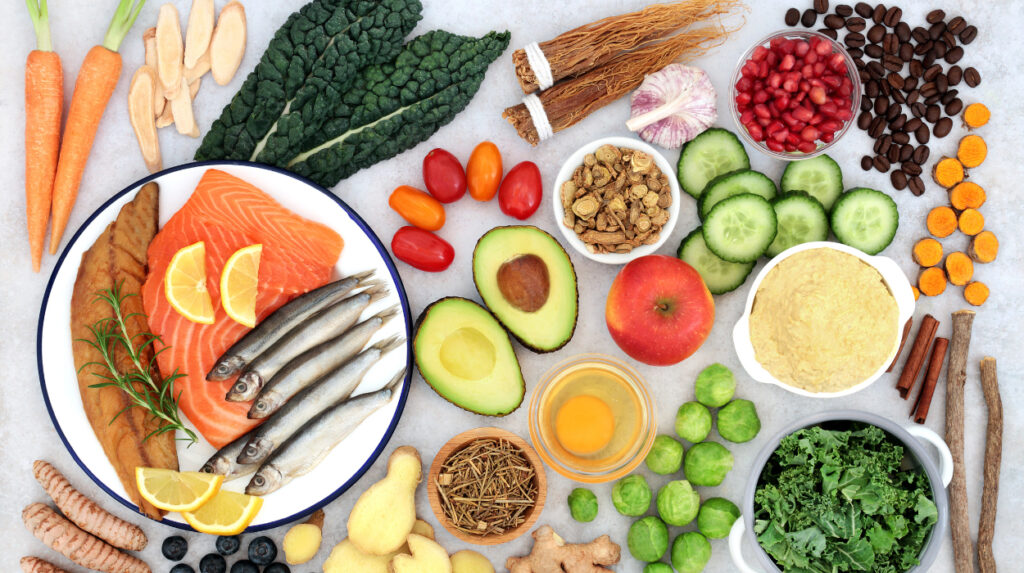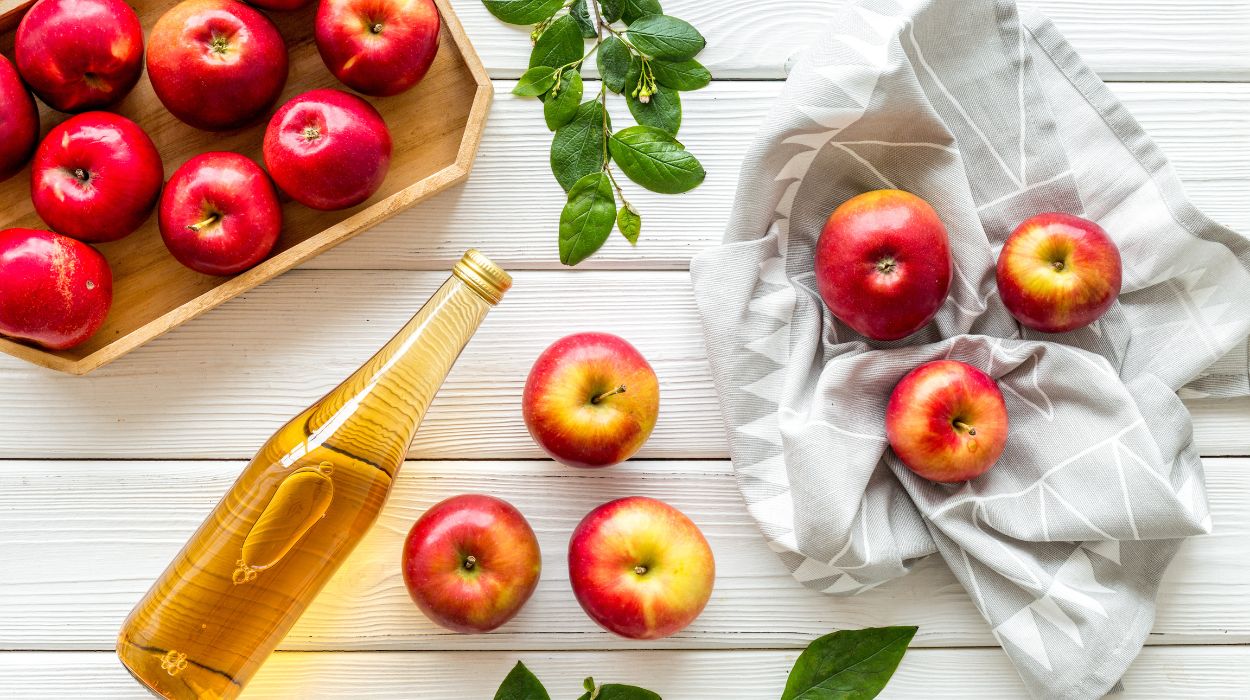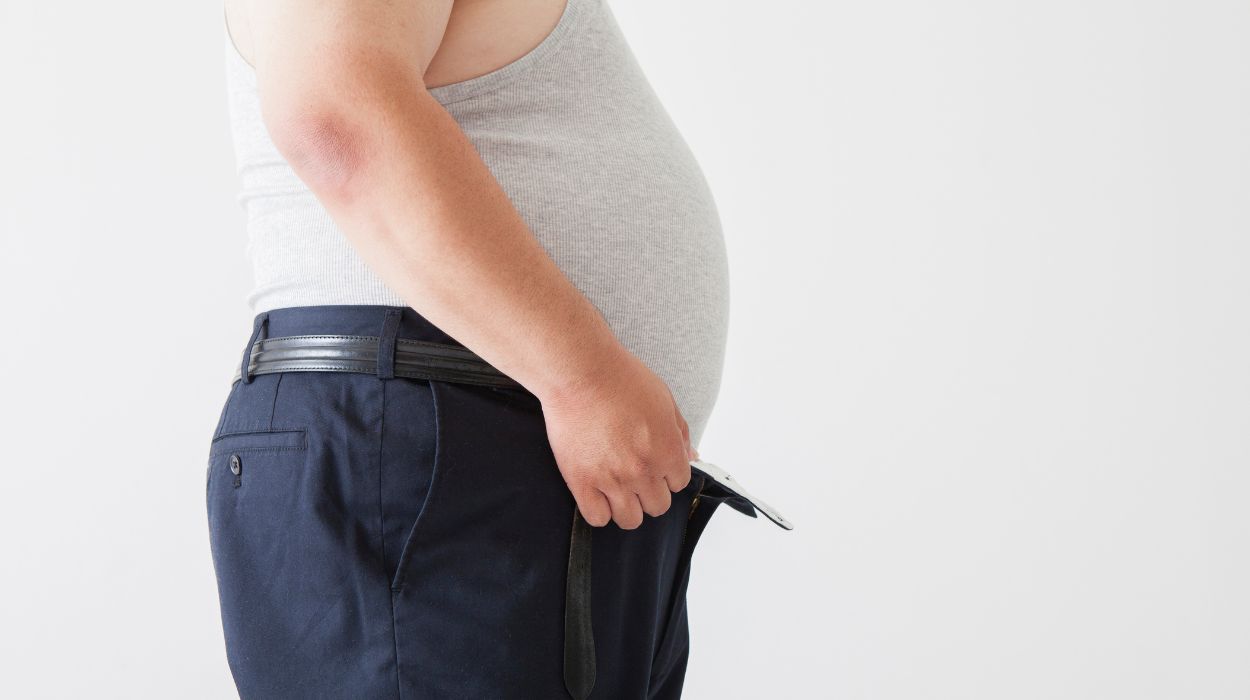How To Lose Fat Without Losing Muscle: Effective Ways & Healthy Tips For 2024

The greatest conundrum among fitness enthusiasts is how to lose fat without losing muscle.
If you want to shed a few pounds, It is only natural that the body also loses some muscle mass.
However, if you go about weight loss safely and effectively, you can optimize fat loss and maintain muscle.
If you want to optimize body fat loss while preventing muscle loss, a healthy lifestyle supported by healthy dieting and regular exercise is the key to supporting muscle retention. With the right approach, you can lose body fat without losing muscle.
Here, we explore the science of fat loss and muscle preservation. The article also explains the benefits of muscle retention and provides essential tricks and tips to lose muscle and preserve muscle simultaneously.
How To Lose Fat Without Losing Muscle: 5 Effective Ways
If you’re working hard to keep fit, losing body fat is likely a big component of your journey. You may be concerned that a weight loss program will cause you to lose some muscles. Fortunately, here are five ways to help you lose fat without losing muscle:
- Exercise regularly, including both cardio and strength training.
- Eat more protein.
- Carb Cycling by eating more carbohydrates on high-intensity workout days
- Avoid crash dieting.
- Get adequate sleep.
Best Ways To Burn Fat Without Losing Muscle
Some of the best ways to achieve fat cutting without losing muscles include:
Featured Partner Offer

PhenQ
- Helps to burn fat
- Crushes food cravings
- Boosts energy and balances mood
- High-quality formula
Money Back Guarantee and Free US Shipping
Regular Exercise
A combination of cardio training and resistance training is crucial for fat-burning without losing muscles.
Aerobic Exercises
Cardio exercises can aid in fat loss by burning additional calories.
However, it doesn’t necessarily mean daily high-intensity interval training classes. You could incorporate some low-intensity and low-impact workouts as they are equally beneficial. Experts recommend trying exercises such as cycling, swimming, jogging, and running.
Further evidence suggests that cardio exercise such as HIIT allows you to build lean muscles while simultaneously helping you burn fats. In one study, researchers from the University of North Carolina found that a 3-week HIIT intervention[1] in obese men and women increased their muscle size over the duration.
Despite these conclusions, cardio exercises are good for fat loss but not for muscle preservation. In fact, excessive cardio exercises alone can be detrimental to maintaining lean muscle tissues. You are much better off incorporating full-body resistance training in your workout routine due to its ability to train and preserve all your muscles.
Resistant Training
Studies have shown that full-body resistance training[2] is essential for maintaining lean body mass. It can even help you gain muscle. Structured, progressive, and challenging full-body resistance training is one of the most effective ways to add strength training to your workout routine.
The most efficient strength training workout plan should involve the whole body rather than falling into a pattern. Opt for simple, head-to-toe exercises spread throughout the body for best results. Fitness experts recommend engaging in full-body building at least three times a week[3] instead of strength training in specific areas once a week.
Some strength training variables you could add to your full-body training routine include weight, squats, angles, tempo, and reps, among many more. The idea is to ensure that these workouts stimulate muscles across the whole body, including the back, shoulders, hips, biceps, triceps, hamstrings, calves, and buttocks.
Mixing out your workouts is the key to losing fat while maintaining muscles. Regularly combining aerobic and strength training exercises is particularly beneficial for muscle retention, but you should never forget that adequate rest is just as essential.
More Proteins/Protein Supplements If Needed

The amount of protein you consume is critical to successful muscle mass preservation and recovery after high-intensity exercises. Dietary guidelines[4] recommend eating 0.8-1 grams of protein daily to avoid deficiency.
Slightly higher amounts of 1-1.2 grams or 30% of your daily calories are ideal for weight loss, especially for active individuals who train hard. Even more elevated amounts of up to 3.1 grams of protein per kilogram of body weight can help preserve lean muscle mass.[5]
Adequate proteins in the body help to rebuild, repair, and maintain muscle tissues. In addition, high-protein diets help you to lose weight. They leave you satiated for longer and are more challenging to digest than fats and carbs, which leads to a thermic effect or, in other words, calorie expenditure while digesting foods.
Clean protein sources include eggs, dairy products, seafood, lean meats, nuts, and quality protein supplements, to mention a few.
Carb Cycling
Have you ever heard of carb cycling? Are you curious about how it works?
As the name suggests, carb cycling is a dieting method emphasizing high carb intake during training days and less carbs on rest days. The idea is to ensure that the glycogen stores that are used during exercise are replenished.
Insulin is triggered when you eat carbohydrates. So, eating carbs on high-intensity days[6] may increase the anabolic stimulation of insulin, which means the production effects on cells, supporting muscle preservation. As long as you have a calorie deficit in your diet, you will lose fat while retaining your muscles.
Carbohydrates for carb cycling include fresh fruits and vegetables, oatmeal, legumes, sweet potatoes, milk, rice, and grains. Always prioritize whole foods over processed or sugary foods.
Avoid Crash Dieting
Crash dieting requires you to suddenly reduce your calorie intake by focusing on one diet or cutting out on some food items.
According to research,[7] such drastic changes in your dieting can lead to muscle loss. While you might be excited by your new weight loss program, you should remember that rapid weight loss almost certainly means rapid muscle loss.
Adequate Sleep Is Important

Getting enough sleep is associated with several health benefits.
Evidence suggests that sleeping about 7-9 hours[8] every night helps to reduce post-training stress levels. As a result, it can promote fat loss and muscle recovery.
When you have a poor sleeping schedule, your metabolism is also affected. This is partly because poor quality sleep causes an excess of ghrelin and less leptin, a hormonal balance associated with increased hunger signals and weight gain.
If you want to lose more body fat while preserving muscle mass, always adhere to a consistent sleeping schedule and avoid stimulants such as coffee past midday for the best results.
Health Benefits Of Losing Fat While Preserving Muscle
Now that you’ve discovered various ways of cutting fat without losing muscle, let’s look at the health benefits of losing fat while preserving muscle:
Improved Metabolism
When you maintain muscle mass, the body can boost metabolism, responsible for weight management and reducing the risk of chronic conditions[9] such as obesity, type 2 diabetes, heart disease, and certain types of cancers.
Improved Cognitive Action
When you regularly exercise with cardio and strength training exercises, the body reduces endorphins, which help to keep depression and stress at bay.[10] This allows for improved brain function.
Increased Insulin Sensitivity
Research[11] shows a relationship between insulin and muscle mass. By preserving muscle mass, an individual can control blood sugar spikes, thereby reducing insulin sensitivity and the risk of diabetes.
Enhanced Physical Performance
When a person preserves muscles but loses body fat, they can develop muscular physiques, which makes it easy to complete everyday activities.
Healthy Aging
It is without a doubt that preserving muscle plays a vital role in supporting independence when you’ve become older. It gives you the autonomy required for a happy life at such an age.
How To Know If You’re Losing Fat Or Muscle?
If your goal is to improve body composition, knowing whether you are losing fat or muscle is critical.
But how can you tell if you are losing fat or muscles? Here are a few helpful ways:
- Examine your exercising routine: If you are only doing cardio and not adding strength training, there is a 50/50 chance that the resultant weight loss is due to fat or muscle loss.
- Physical appearance: Perhaps the easiest, although subjective, way of telling whether you are losing fat or muscle is to look at yourself in the mirror. If you lose fat alone, you’ll likely notice a reduced waist and hips while the rest of the body remains shapelier. You can also measure your waist and hip circumferences to see more reliable results and monitor your progress.
- Rapid weight loss most likely means a reduction in muscle mass.
- Physical performance or low energy levels: Your routine workouts may become strenuous. You may also become sluggish in completing daily activities. This trend over a long period might suggest loss of muscle mass.
- Use body fat calipers and bioelectrical impedance scales to measure body fat composition.
- You can consult a fitness professional for expert advice if you have specific goals.
Featured Partner Offer

Lifestyle And Exercise Tips To Lose Fat And Keep Muscle
There is no one-fit-all strategy of how to lose body fat without losing muscle. Here are some additional tricks and tips to help with your goal:
- Leave a logical calorie deficit.
- Incorporate rest days with no strenuous exercising and optional stretching for muscle recovery.
- Keep track of your weight and learn more about fat testing so that you can identify and implement sustainable lifestyle changes.
- Stay hydrated. Water naturally helps with appetite regulation, metabolism, and electrolyte balance during exercises.
- Avoid over-exercising. Pushing yourself too much can get you tired, over-drained, or injured.
- Eat regularly. Find the best meal timing for you. You may go for intermittent fasting with 2-3 meals, or you can plan your diet by separating it up to 5-6 meals. It is a very individual plan and depends on your lifestyle.
- Avoid sugary and high-glycemic foods.
- Learn how to manipulate foods to affect your insulin sensitivity.
- Lift weights to increase your muscle mass.
- Always consult your doctor before using protein or fat-burning supplements.
The Bottom Line
Determining the right combination to preserve muscle can feel overwhelming if you want to lose fat without losing muscle.
Along with cardio training, consistent strength training can help to burn fats and reduce muscle loss while supporting an increase in the lean muscles.
You may also need to cycle your carb intake between workout sessions, add more protein-rich foods, avoid drastic diet restrictions, and get enough rest for maximum fat-burning and muscle retention.
However, it would help if you kept in mind that people are different, and elements such as genetics, fitness level, and environmental factors can affect your efforts to lose fat while preserving muscle.
Frequently Asked Questions
Yes, if fat loss is rapid and extreme, it may also reduce muscle mass.
Yes, it is possible to lose fat while preserving muscle. Combining aerobic and strength training exercises with carb cycling, a high-protein diet, and adequate sleep would be best. Also, avoid crash dieting at all costs.
You will know your body is burning fat if you start showing signs such as improved muscles, reduced body measurements, sustained energies, and weight loss.
Bodybuilders lose fat and maintain muscle by exercising, eating more proteins, eating more carbs on high-intensity workout days, avoiding crash dieting, and getting adequate sleep.
Eat a balanced diet comprising essential nutrients, including proteins, complex carbs, and healthy fats. In addition, always remember to stay hydrated.
No, spot reduction is not scientifically approved. However, targeting overall body fat makes it possible to reach the abdominal fats. Muscle retention is enhanced by strength training.
Although it may take time, sticking to an exercise routine and eating high-protein foods can help with recomposition.
Resources
- Malia N.M. Blue, Smith‐Ryan, A.E., Trexler, E.T. and Hirsch, K.R. (2018). The effects of high intensity interval training on muscle size and quality in overweight and obese adults. Journal of Science and Medicine in Sport, [online] 21(2), pp.207–212. doi:https://doi.org/10.1016/j.jsams.2017.06.001.
- Thomas, M.H. and Burns, S.P. (2016). Increasing Lean Mass and Strength: A Comparison of High Frequency Strength Training to Lower Frequency Strength Training. International journal of exercise science, [online] 9(2), pp.159–167. Available at: https://www.ncbi.nlm.nih.gov/pmc/articles/PMC4836564/
- Schöenfeld, B.J., Ratamess, N.A., Peterson, M.D., Contreras, B. and Gül Tiryaki-Sönmez (2015). Influence of Resistance Training Frequency on Muscular Adaptations in Well-Trained Men. Journal of Strength and Conditioning Research, [online] 29(7), pp.1821–1829. doi:https://doi.org/10.1519/jsc.0000000000000970.
- Ju Young Kim (2021). Optimal Diet Strategies for Weight Loss and Weight Loss Maintenance. Journal of obesity & metabolic syndrome, [online] 30(1), pp.20–31. doi:https://doi.org/10.7570/jomes20065.
- Ralf Jäger, Kerksick, C.M., Campbell, B., Cribb, P.J., Wells, S., Skwiat, T.M., Purpura, M., Ziegenfuss, T.N., Ferrando, A.A., Arent, S.M., Smith‐Ryan, A.E., Stout, J.R., Arciero, P.J., Ormsbee, M.J., Taylor, L., Wilborn, C., Kalman, D., Kreider, R.B., Willoughby, D.S. and Hoffman, J.R. (2017). International Society of Sports Nutrition Position Stand: protein and exercise. Journal of the International Society of Sports Nutrition, [online] 14(1). doi:https://doi.org/10.1186/s12970-017-0177-8.
- Henselmans, M., Bjørnsen, T., Hedderman, R. and Vårvik, F.T. (2022). The Effect of Carbohydrate Intake on Strength and Resistance Training Performance: A Systematic Review. Nutrients, [online] 14(4), p.856. doi:https://doi.org/10.3390/nu14040856.
- McCarthy, H.D. and Berg, A. (2021). Weight Loss Strategies and the Risk of Skeletal Muscle Mass Loss. Nutrients, [online] 13(7), pp.2473–2473. doi:https://doi.org/10.3390/nu13072473.
- Doherty, R., Madigan, S.M., Nevill, A.M., Warrington, G.D. and Ellis, J. (2021). The Sleep and Recovery Practices of Athletes. Nutrients, [online] 13(4), pp.1330–1330. doi:https://doi.org/10.3390/nu13041330.
- Booth, F.W., Roberts, C.K. and Laye, M.J. (2012). Lack of Exercise Is a Major Cause of Chronic Diseases. Comprehensive Physiology, [online] pp.1143–1211. doi:https://doi.org/10.1002/cphy.c110025.
- brain (2020). Working out boosts brain health. [online] https://www.apa.org. Available at: https://www.apa.org/topics/exercise-fitness/stress
- Haines, M.S., Dichtel, L.E., Santoso, K., Torriani, M., Miller, K.K. and Bredella, M.A. (2020). Association between muscle mass and insulin sensitivity independent of detrimental adipose depots in young adults with overweight/obesity. International Journal of Obesity, [online] 44(9), pp.1851–1858. doi:https://doi.org/10.1038/s41366-020-0590-y.
More from Weight Management
-

How To Drink Apple Cider Vinegar For Weight Loss In 1 Week In 2024
January 10, 2024
Taking apple cider vinegar has become a sensation for its supposed health benefits, despite its sour taste. Apple cider vinegar may…Read more -

How To Lose Belly Fat After 50: Here’s 10 Tips For People Over 50 To Try In 2024
December 27, 2023
Losing weight over 50 can feel challenging, especially in stubborn areas like the abdomen. As we age, hormonal changes, slower metabolism,…Read more -

How To Lose Weight With Hypothyroidism – 10 Ways You Should Try In 2024
December 22, 2023
Hypothyroidism[1] is a condition that occurs when a person has low levels of thyroid hormone, and it most often develops when…Read more -

Hypnosis For Weight Loss: Unlocking Your Mind’s Potential For Success 2024
December 20, 2023
You’ve heard about various methods and tools to achieve weight loss and you might have looked into how to get ozempic.…Read more


